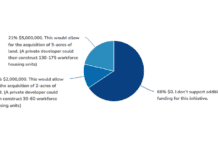The conflict is as old as education whether public or private: sports versus the arts.
In a state that is dead last in education funding, the conflict grows even sharper because local school districts need more money from the community to make up for the lack of state support.
By Mike Cosentino
Larson Newspapers
The conflict is as old as education whether public or private: sports versus the arts.
In a state that is dead last in education funding, the conflict grows even sharper because local school districts need more money from the community to make up for the lack of state support.
In Arizona, site councils are mandated by state statute to act as advisory bodies to school principals. The councils, made up of parents who have children attending the school, community members without students in the school, staff members including non-teachers and the school principal, help make decisions about which school programs receive funds.
Every school in the Sedona-Oak Creek School District has a site council.
"Just look at the reality of the percentages involved and the expenditures of what is really needed to run athletic, club and arts programs," said Genna Adams, Sedona Red Rock High School site council secretary.
The reality is that more then 370 of the roughly 500 SRRHS students participate in athletics, according to John Parks, SRRHS athletic director.
Yet, according to Mary Beth Bunker, president of the high school site council, "We started this year with zero dollars in our athletic budget and about $24,000 in our general fund budget that can be used for athletics. [SRRHS is] asking for almost $40,000 in tax credit support from [the Sedona community] this year."
The rest of the more than $185,000 needed to run high school athletics comes from district funds, Sedona-Oak Creek School District records state.
That budget pays for 370 students to play on 24 sports teams, including cheer squads that attend up to 390 high school games a year.
"We began this year with $138 in our sports tax credit budget and $15,000 in our arts budget," said Lisa Hirsch, West Sedona School principal.
"Tax credit funds means we can give today’s student what [most] of us got when we were in school — some art, music, and sports. Academics comes first, but let’s face it, these are the reasons many kids come to school," Hirsch said.
As of January, West Sedona School had $29,000 in general funds, $35,000 in the fine arts budget and $1,300 in sports, Hirsch said.
"It cost $5,000 just in travel expenses for our seventh- and eighth-grade teams," she said.
"We want to keep the arts money coming in, we still do not have enough to do all we need. But we also can’t fund soccer, as requested by some parents," Hirsch said.
Bunker describes the tax credit money for schools not as a donation, but as an allocation of tax money.
"It’s just telling the state to allocate a portion of taxes they are paying anyway to the local schools," she said.
Tax credit funds given to schools are direct credits on state taxes owed. Taxpayers can direct the school to spend the money for specific areas.
The issue here is whether to earmark funds for sports, arts or for the general funds.
Site council representatives like to see money allocated to the general fund because the council can then channel it to where the most need is, Hirsch and Bunker agreed.
Whether Sedona likes it or not, "Sports has the biggest need," Bunker said.
"We are trying to get away from first come, first served. If an [activity] needs $15,000 for field trips, we need them to tell us early in the year because right now sports has the biggest need," Bunker said.
"Sports seems to be where kids are focused. It’s hard to tell a kid to suddenly decide to play the clarinet. We can’t force them," she said.
Couples can allocate $400 and individuals can give $200 of their tax money to schools by Dec. 31 of each year.
"Even $50 helps. You do not have to put down the whole amount," Bunker said.
The SRRHS site council meets the second Wednesday of each month at the high school starting at 3:30 p.m.
Currently, the council needs two community members.
At West Sedona School, Hirsch said she has about 20 percent of parents involved in some aspect of the school’s function.
"We should have a lot more participation," she said.
Mike Cosentino can be reached at 282-7795, Ext. 128, or e-mail to mcosentino@larsonnewspapers.com





















